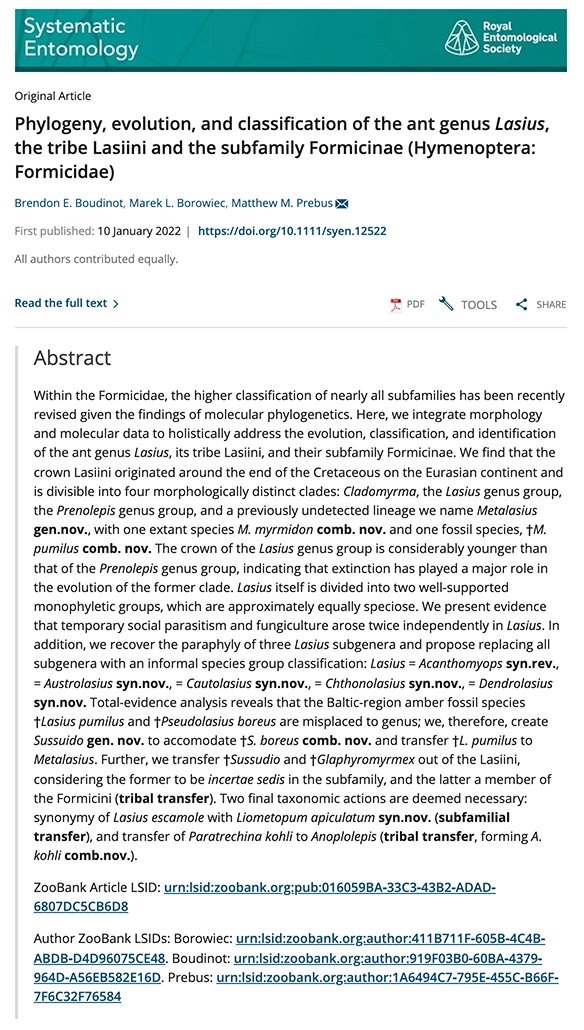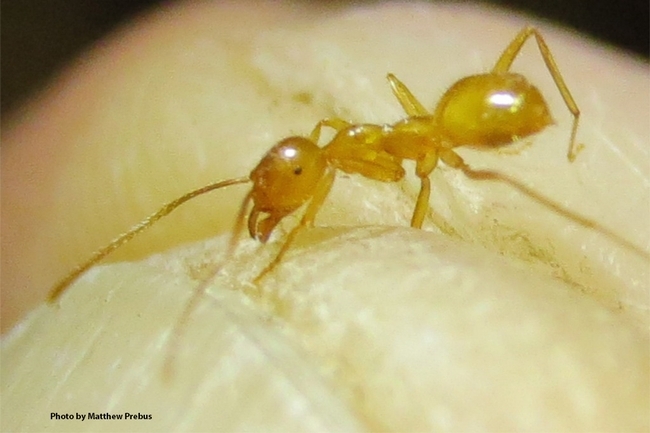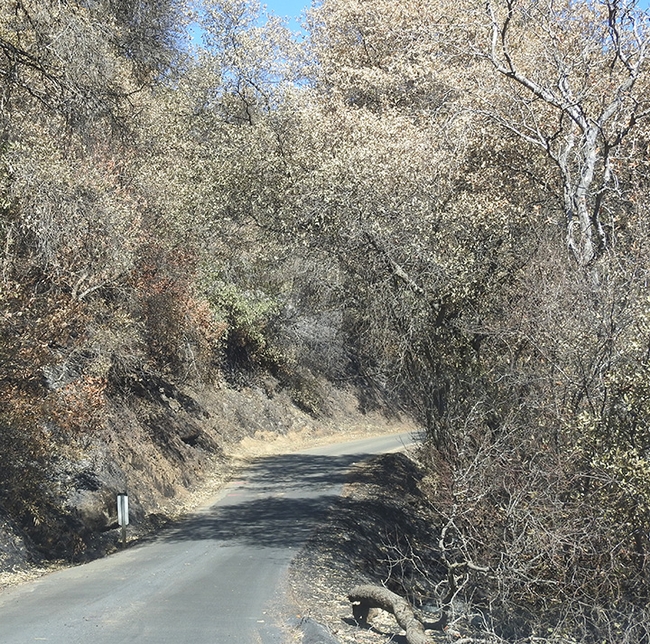
- It's one of the habitats of the California state insect, the California dogface butterfly, Zerene eurydice, and its host plant, false indigo, Amorpha californica--or at least it was before massive wildfire swept through there on Aug. 19, 2020.
- It's one of 10 research sites of butterfly guru Art Shapiro, UC Davis distinguished professor of evolution and ecology, who has monitored central California's butterfly populations since 1972 and maintains a research website at https://butterfly.ucdavis.edu/
And now, it's the home of a newly discovered ant species.
Myrmecologists Brendon Boudinot, Marek Borowiec and Matthew Prebus, all alumni of the Phil Ward laboratory, UC Davis Department of Entomology and Nematology, just published their collaborative research, "Phylogeny, Evolution, and Classification of the Ant Genus Lasius, the Tribe Lasiini and the Subfamily Formicinae (Hymenoptera: Formicidae)," in the journal Systemic Entomology.
The ant world on Twitter is crawling with congratulatory comments and how "awesome" the work is. Wrote one: "Congratulations! Lasius is a familiar genus in Japan, so I will let the Japanese entomologists know about it."
The story behind the story? It all began in the Ward lab. "The Three Ant Men" are now scattered from Idaho to Arizona to Germany.
- Borowiec, who received his doctorate at UC Davis in 2016, is an assistant professor at the University of Idaho.
- Prebus, who received his doctorate at UC Davis in 2018, is a postdoctoral scholar at Arizona State University.
- Boudinot, who received his doctorate at UC Davis in 2020, is in Jena, Germany on a two-year Alexander von Humboldt Research Fellowship to research evolutionary and comparative anatomy.



Looking back, Prebus and Borowiec said that they were both interested in Lasius atopus "due to its strange morphology and lack of phylogenetic data despite the amount of attention paid to the genus, and planned a collecting trip to the type locality in Mendocino County in 2013."
The collecting trip to Mendocino proved unsuccessful. "But because of Phil's extensive collections. we knew of a population of a closely related species in Gates Canyon near the city of Vacaville," Prebus said. This time the trio collected specimens from several colonies at Gates Canyon, which is located off Pleasants Valley Road.
"For all of us, this was a collaborative side project, so after the study was presented, submitted, and rejected, it took the back-burner while people finished their dissertations, got jobs, got married, had kids, and so on," Prebus recalled. "Speaking personally, the pandemic put quite a few of my postdoc projects on hold after the Arizona State University campus closed, but the small upside amongst the inundation of downsides was that I was able to focus on getting some long-haul projects into shape for publication, including the Lasius study. This involved a huge amount of reanalysis of data that we had already collected, but thankfully didn't require generating any new data."
See more on the ant research on the UC Davis Department of Entomology and Nematology website.
(Note that the 7.8 mile Gates Canyon Road, lined with residential homes (private property) and "no trespassing" signs, is a paved county road that leads to the top of Mount Summit, the highest point in Vacaville. It is narrow and hilly. Hikers, runners, walkers and bicylists consider it a challenge.)
Attached Images:

This is the species (Lasius nr. atopus) that inspired the initial stages of the UC Davis project. (Photo by Matthew Prebus)

This image of Gates Canyon Road, Vacaville, was taken Sept. 25, 2020, following the massive wildfire that swept through the canyon. (Photo by Kathy Keatley Garvey)

Gates Canyon Road is a paved county road, located just outside the city of Vacaville. (Photo by Kathy Keatley Garvey)